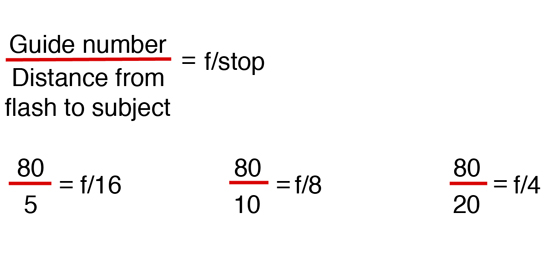Metering Flash Light
Many cameras have automatic flash units whose sensor measures the light reflecting off of the subject and produces the appropriate intensity of flash. If you are using a separate manual flash unit, you will need to do this calculation yourself by adjusting your shutter speed and aperture to match the flash light and distance to subject.
Flash and Shutter Synchronization
A flash burst is extremely fast (a few ten thousandths of a second). In order to capture this flare, the shutter must be completely open during the flash. Coordinating the timing of the flash with the opening of the shutter is called synchronization. Flash units that are built into the camera will automatically synchronize the flash with the shutter when the shutter release button is pressed. Separate flash units, that are mounted onto the camera’s hot shoe or connected with a sync cord, must be paired with the appropriate shutter speed in order to synchronize. For cameras with focal plane shutters, a shutter speed of 1/60 of a second or slower will capture the flash of light. This is because at speeds faster than 1/60 of a second, focal-plane shutters are open only part of the way as they move across the film plane, so only part of the image would be exposed. Cameras with leaf shutters will catch a flash at any shutter speed. Refer to your camera and your flash unit’s manuals for additional details on using flash.
If you do not have a sync cord and want to catch the flash, you can set your shutter speed to "Bulb" or "Time". Then, while holding down the shutter release, fire the flash manually to make the exposure. Release the exposure. Keep in mind that while the shutter is open, the film or sensor will be exposed to all available light. If you only want the exposure of the flash, you should work in the dark.
Calculating Exposure for Flash
As explained in the previous section, if you are using a manual flash, you must set your shutter speed to 1/60 of a second or slower. As your shutter speed will be set to the standard, slow synchronization speed, choose an aperture that will ensure you have the correct exposure. Flash is too quick to be measured with an in-camera meter. There are two ways to meter this light:
1. A hand-held light meter with a flash setting
2. Calculating your own flash exposure. This measurement is based on 1) the distance from the subject to the flash bulb (the closer the subject is to the flash, the brighter the light that it receives) and 2) the flash unit’s output (its guide number). Refer to the flash unit for a table of guide numbers. To calculate, divide the distance to the subject into the flash unit’s output.

